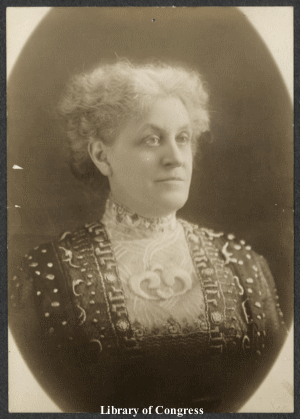 SKC Films Library SKC Films Library |
|
|
| SKC Films Library
>> Political Science
>> Political
Institutions and Public Administration: United States > Suffrage |
 Carrie Chapman Catt Carrie Chapman Cattworked for passage of the 19th Amendment, and then to ensure that women possessed an understanding of public affairs so they could vote intelligently Carrie Clinton Lane was born in Ripon, Wisconsin, on January 9, 1859. Her family moved to rural Charles City, Iowa, when she was seven, where she graduated from high school in 1877. In 1880 she graduated from the Iowa Agricultural College and Model Farm, the only woman in her graduating class. After college she worked as a law clerk in Charles City and as a school teacher and a principal in Mason City. In 1883 she became one of the first women in the nation appointed superintendent of schools. In February 1885 Carrie married Leo Chapman, editor and publisher of the Mason City Republican. He died of typhoid fever the next year, while seeking new employment in San Francisco. Arriving a few days after her husband's death, Mrs. Chapman decided to remain in San Francisco, where she became the city's first female newspaper reporter. Returning to Charles City in 1887, Carrie joined the Iowa Woman Suffrage Association, for which she worked as a professional writer and lecturer. She later became the group's recording secretary, and from 1890 to 1892 served as the association's state organizer. In June 1890, Carrie Lane Chapman married George Catt, a fellow Iowa Agricultural College alumnus she had met during her stay in San Francisco who encouraged her suffrage activity. In 1890 Catt spoke at the Washington, D.C., convention of the National American Woman Suffrage Association (NAWSA). By 1892 she had established a reputation as one of the suffrage movement's most effective lecturers and organizers. Her work even extended into Canada and to Europe. In 1892 she was asked by Susan B. Anthony to address Congress on the proposed suffrage amendment. In 1900, she succeeded Anthony as president of NAWSA. In 1902, Catt helped organize the International Woman Suffrage Alliance (IWSA), which eventually incorporated associations in 32 nations. In 1904, she resigned her presidency of NAWSA to become president of IWSA, in which capacity she served until 1923. George Catt, who had been in poor health for about a year, died in October 1905. His death was followed by those of Anthony (February 1906), Carrie's younger brother William (September 1907) and her mother (December 1907), and Catt was left grief-stricken and emotionally exhausted. Her doctor and friends encouraged her to travel abroad in order to regain her emotional and physical health, so she spent most of the period between 1907 and 1915 promoting equal-suffrage rights worldwide. Returning to the United States in 1915, Catt resumed the leadership of NAWSA, which had become badly divided. In 1916, at a NAWSA convention, she unveiled her plan to campaign for suffrage on both the state and federal levels, and to compromise for partial suffrage in the states resisting change. New York passed a state woman suffrage referendum in 1917, and by 1918, President Woodrow Wilson was behind the cause. The Nineteenth Amendment, giving all women the right to vote, officially became part of the Constitution on August 26, 1920. Her goal of woman suffrage having been achieved, Catt stepped down from the presidency of NAWSA and turned her attention to ensuring that women possessed an understanding of public affairs so they could vote intelligently. To that end, she founded the League of Women Voters, and served as its honorary president for the rest of her life. In 1923, she published Woman Suffrage and Politics: The Inner Story of the Suffrage Movement, with Nettie Rogers Shuler. In her later years, Catt's interests broadened to include the causes of world peace and child labor. She founded the National Committee on the Cause and Cure of War in 1925, serving as its chair until 1932 and as honorary chair thereafter. She also supported the League of Nations and, later, the United Nations. Carrie Lane Chapman Catt died at her home in New Rochelle, New York, on March 9, 1947. She is interred at Woodlawn Cemetery, in the north Bronx, New York City. WEB SOURCE |
SKC Films Library >> Political Science >> Political Institutions and Public Administration: United States > Suffrage This page was last updated on 03/08/2017. |